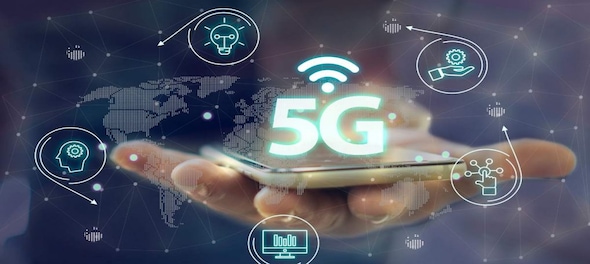
For a generation that lives and breathes through its smartphones, internet connectivity has become an essential need. More so after the COVID-19 pandemic when the whole world was forced to a digital jump — a change none of us knew we needed. With this digital jump, India saw itself entering the 5G circle.
The world of 5G seemed so promising that I decided to port my number to Airtel from Vodafone after using the telecom provider for seven years (yes, I have issues but more on that later). This decision came when Airtel and Jio announced the launch of their respective 5G services in October during the India Mobile Congress event.
At the launch, Airtel said that users can expect “between 20 to 30 times higher speeds than today coupled with brilliant voice experience and super-fast call connect”, which is not exactly incorrect.
While the 4G network on my phone struggles to reach 50 Mbps on any given day, the 5G network ranges anywhere between 300 and 600 Mbps, the highest ever being 701 Mbps. Mind-blowing, I know right? The speed is almost six times better than my Jio Fiber 5G WiFi as well, which is usually at about 100 Mbps. For a layman, this loosely translates to apps loading faster, high-quality video streaming (4K streams like a dream) and a better gaming experience — and this is just the tip of the iceberg.
Also Read: Mumbai cops thwart cyber heist by nipping fraudulent Rs 44 lakh bank transaction in the bud
What would this mean for telecom providers? A pool of users hooked on to this unimaginable experience, looking for ways to make the most out of it. In a recent survey, Ericsson showed that consumers are willing to pay a 10 percent base premium for 5G and an additional 35 percent premium for (of their choice) bundled selected 5G services.
For now, the 5G services do not come at an extra cost. If you have a 4G SIM, it will automatically upgrade to 5G and your current tariff plan will continue. What will change is the rate at which you consume your data. Where I struggled to finish off even 10 GB of data in a month — mostly because of the speed and my WiFi just did a better job — I have used over 30 GB of 5G data in the last 23 days. This includes regular WhatsApp and Instagram updates throughout the day, occasional window shopping on different apps, streaming FHD videos, maybe some navigation — depending on the kind of day I’m having — and some light gaming.
“For Indian consumers, 5G will enable a smarter and more connected world. In the early stages of 5G, we will see use cases like improved mobile broadband (eMBB) and fixed wireless access (FWA). These will help in addressing the issue of low fixed broadband penetration in India and improve consumers' data experience while on the go. This means quicker downloads, lower lag and significant impact on how we live, work and play,” Nitin Bansal, MD, India & Head-Networks, Southeast Asia, Oceania and India, Ericsson, told CNBC-TV18.
Ericsson also said that the top 10 use cases that Indian consumers are looking forward to on 5G plans include Health and Fitness, 360 degree Live streaming, Cloud gaming, 5G TV Package, Virtual meeting space, immersive education, best seat experience, interactive calling, location-based AR shopping and VR Shopping. And that is where the future lies.
Maybe telecom companies will offer more data with more expensive plans or increase the amount of data in the existing plans (which is very unlikely).
With more and more brands taking the Web 3.0 route and essentially creating a mixed-reality world for consumers to explore, 5G seems like the only gateway to it. “According to Ericsson ConsumerLab’s report ‘5G The next wave’, 5G users on average spend one hour more per week in metaverse-related services than 4G users. We also expect two hours of more video content to be consumed weekly on mobile devices, 1.5 hours of which will be on AR/VR glasses by 2025,” Bansal added.
In its report titled 5G – Enable, Elevate, and Emerge, Deloitte mentioned that newer trends will emerge like smartphones becoming bigger and slimmer, likely becoming more foldable or expandable. Given the embedded 5G hardware, technology will be seen summarising the world in our hands via smartphones seamlessly bending reality into virtual reality.
“Digital experiences will transform traditional shopping behaviours and the focus will be on providing enhanced customer experiences by combining the benefits of physical brick-and-mortar stores with immersive shopping platforms,” it added.
The service is still in the process of rolling out and only two telecom providers have initiated it. The coverage is a little patchy and can really struggle in crowded places but the speed is great compared to the wee 4G. Even while travelling, I could get up to 300 Mbps, and 4G has failed me more often than not in those situations.
Imagine not being able to put up a story on Instagram because your app just won’t load. Not that 4G is bad by any means but once you get 5G there is no going back. The difference that a couple of seconds can make is huge in terms of experience, even if it might seem like it on paper. Those who know, know.
Also Read: Groceries at JioMart or food at IRCTC's Zoop — this company powers the chatbots at your service
Like I said, this is just the beginning and predicting what users can expect in the future is nearly impossible. Would we continue to see such speeds? Would it get better? Worse? Would more use cases come into the picture? Or are we still too behind on that?
Check out our in-depth Market Coverage, Business News & get real-time Stock Market Updates on CNBC-TV18. Also, Watch our channels CNBC-TV18, CNBC Awaaz and CNBC Bajar Live on-the-go!



